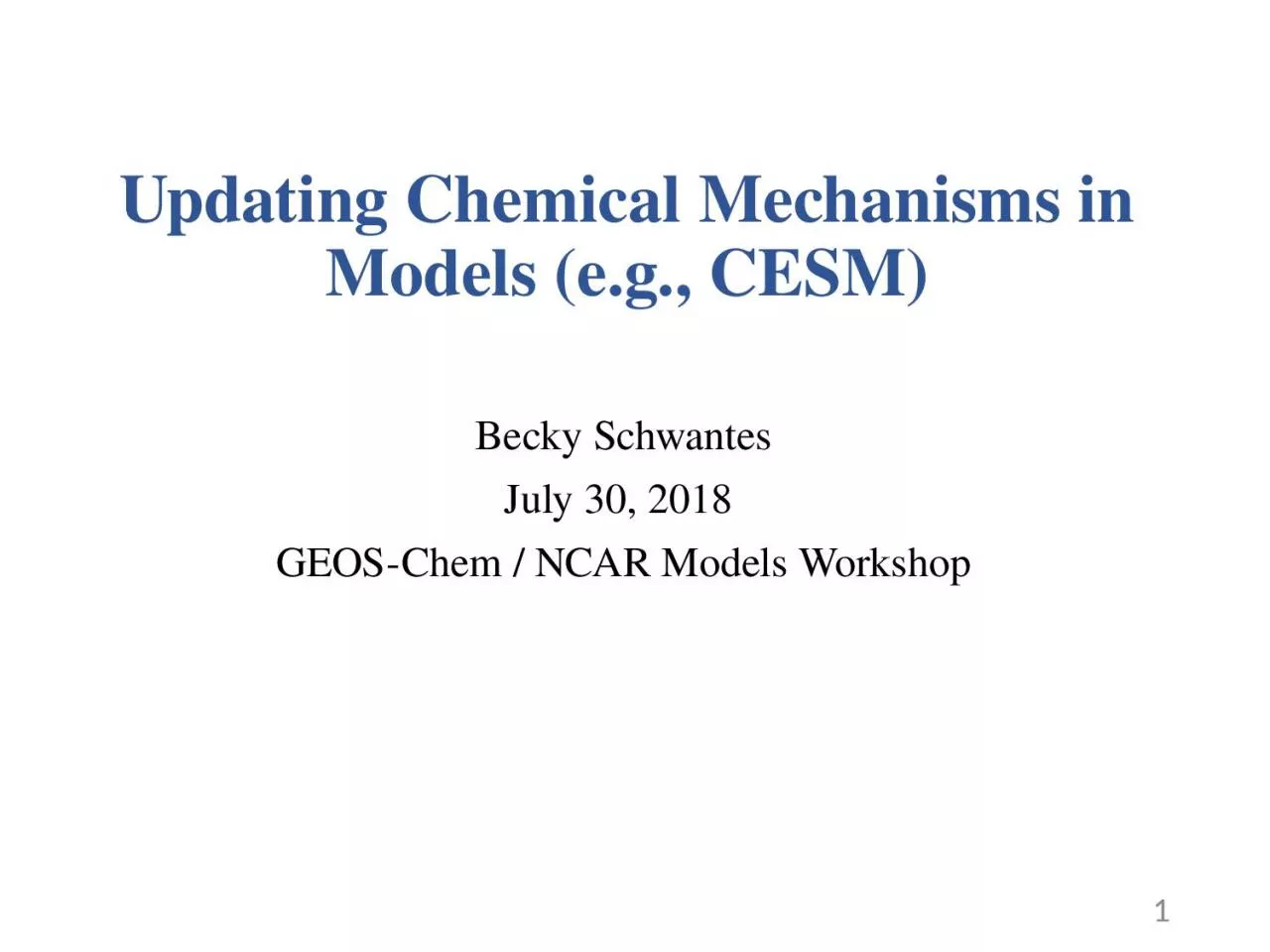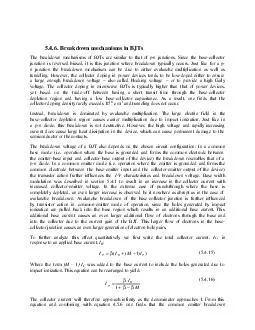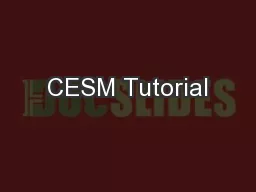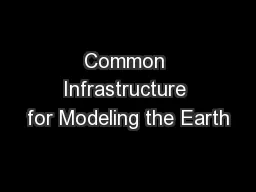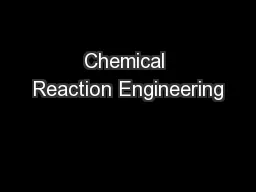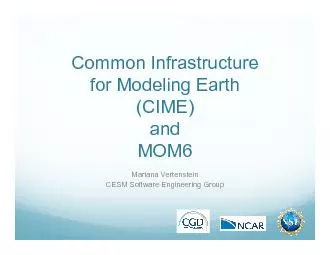PPT-Updating Chemical Mechanisms in Models (e.g., CESM)
Author : PeacefulPenguin | Published Date : 2022-08-03
Becky Schwantes July 30 2018 GEOS Chem NCAR Models Workshop 1 2 Current Tropospheric Chemical Mechanisms in CESM Configuration Compset Model Top Chemical Mechanism
Presentation Embed Code
Download Presentation
Download Presentation The PPT/PDF document "Updating Chemical Mechanisms in Models (..." is the property of its rightful owner. Permission is granted to download and print the materials on this website for personal, non-commercial use only, and to display it on your personal computer provided you do not modify the materials and that you retain all copyright notices contained in the materials. By downloading content from our website, you accept the terms of this agreement.
Updating Chemical Mechanisms in Models (e.g., CESM): Transcript
Download Rules Of Document
"Updating Chemical Mechanisms in Models (e.g., CESM)"The content belongs to its owner. You may download and print it for personal use, without modification, and keep all copyright notices. By downloading, you agree to these terms.
Related Documents

